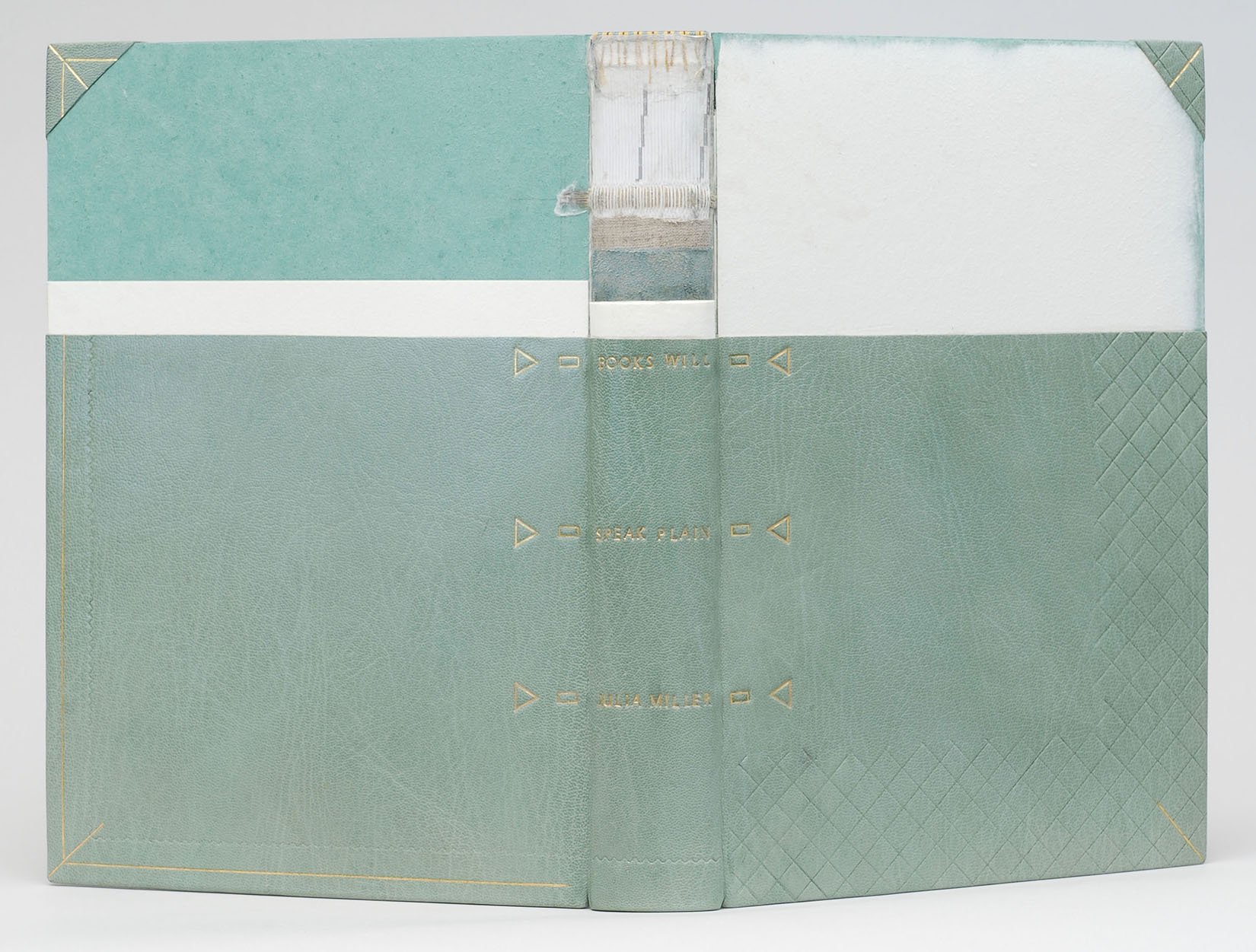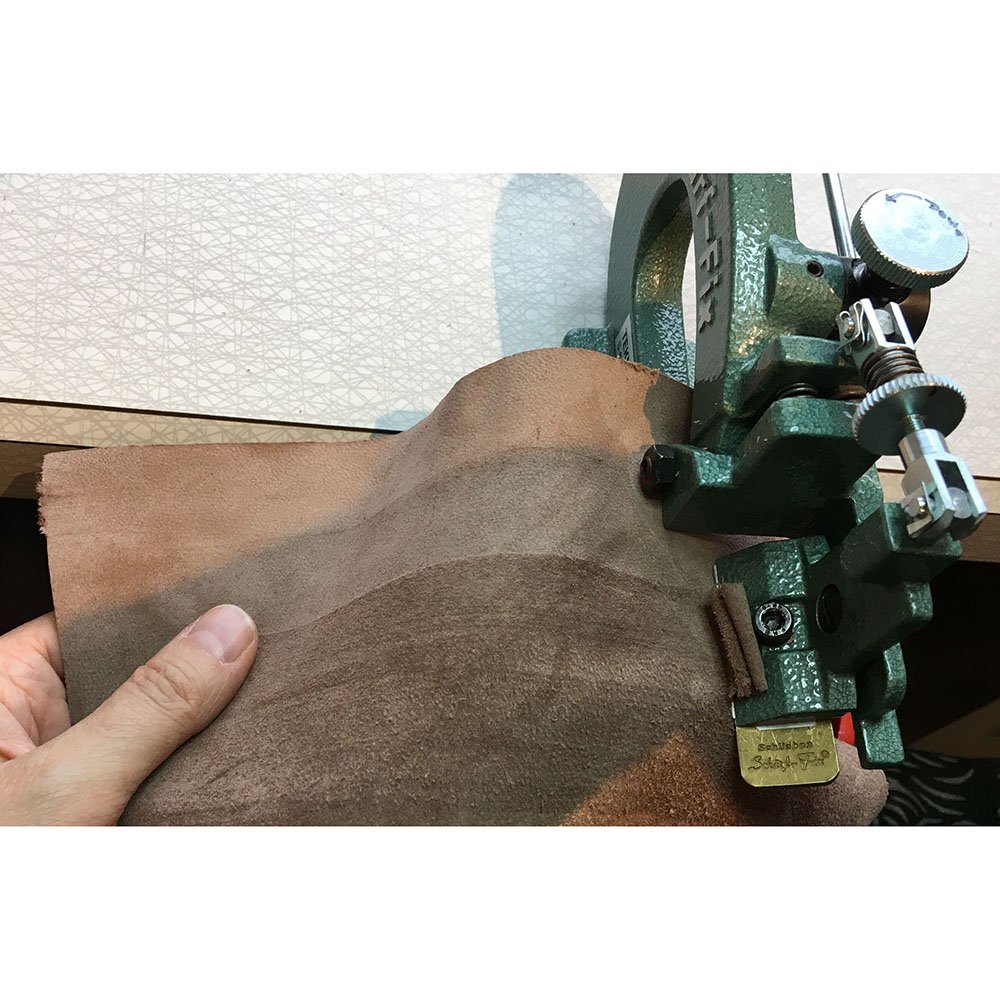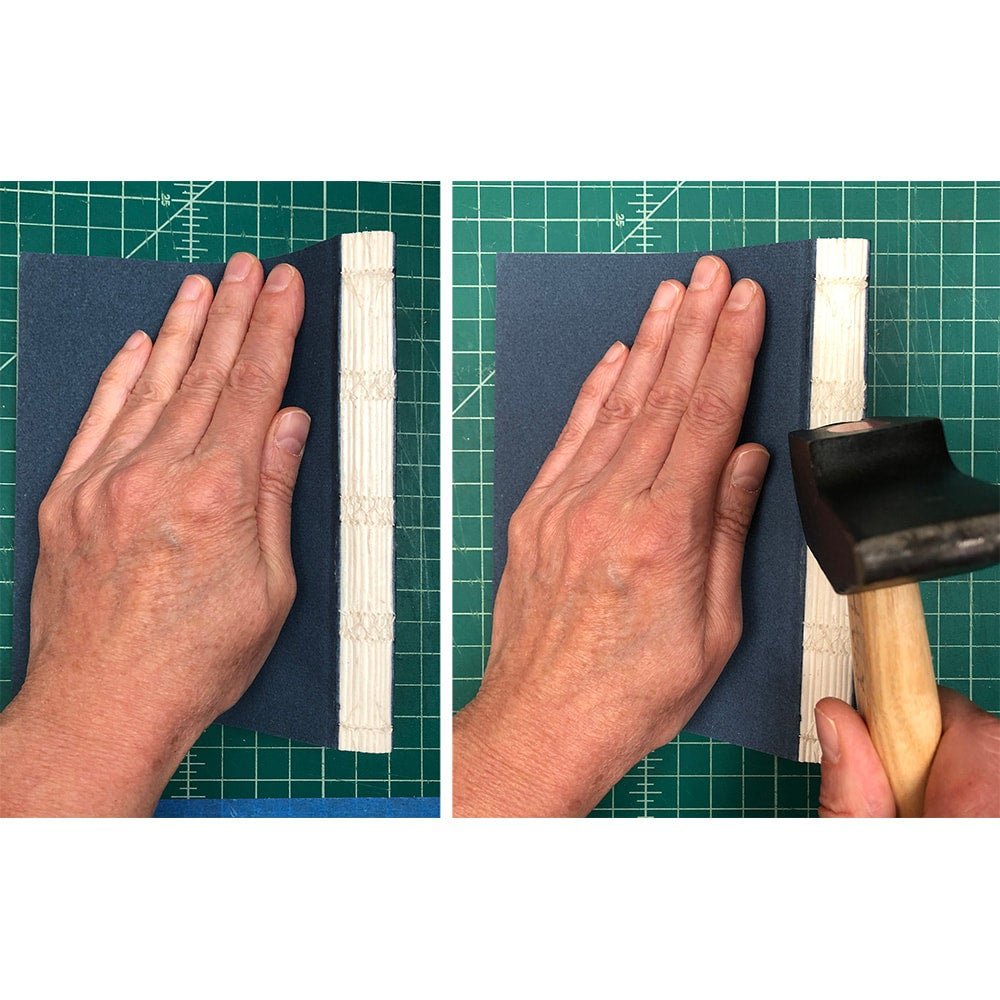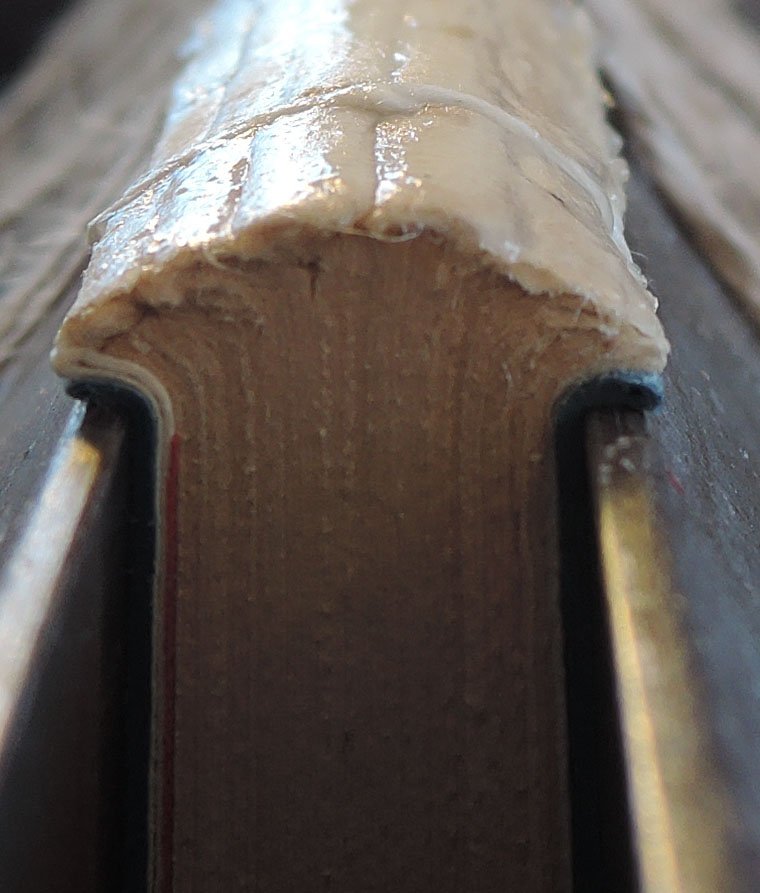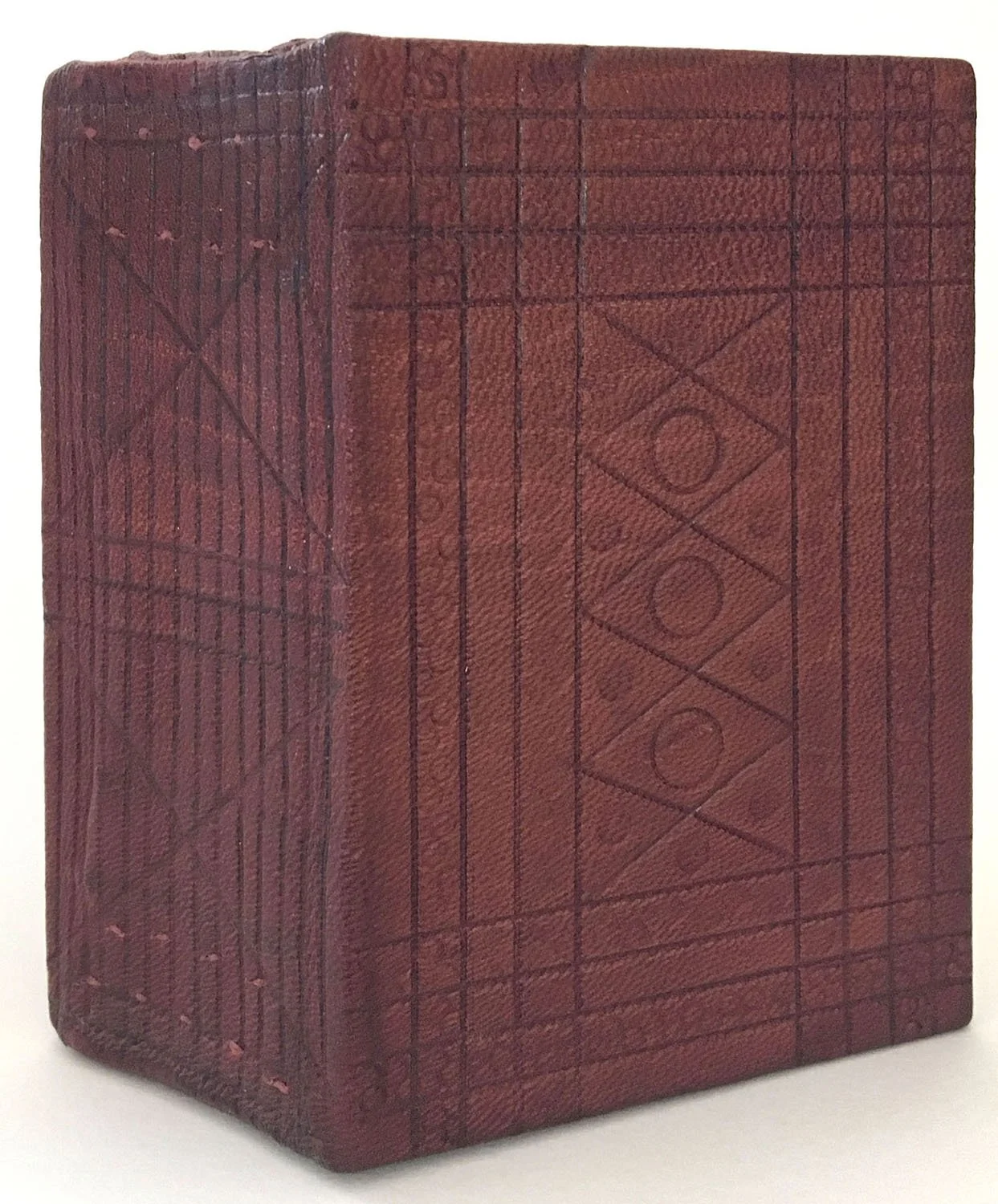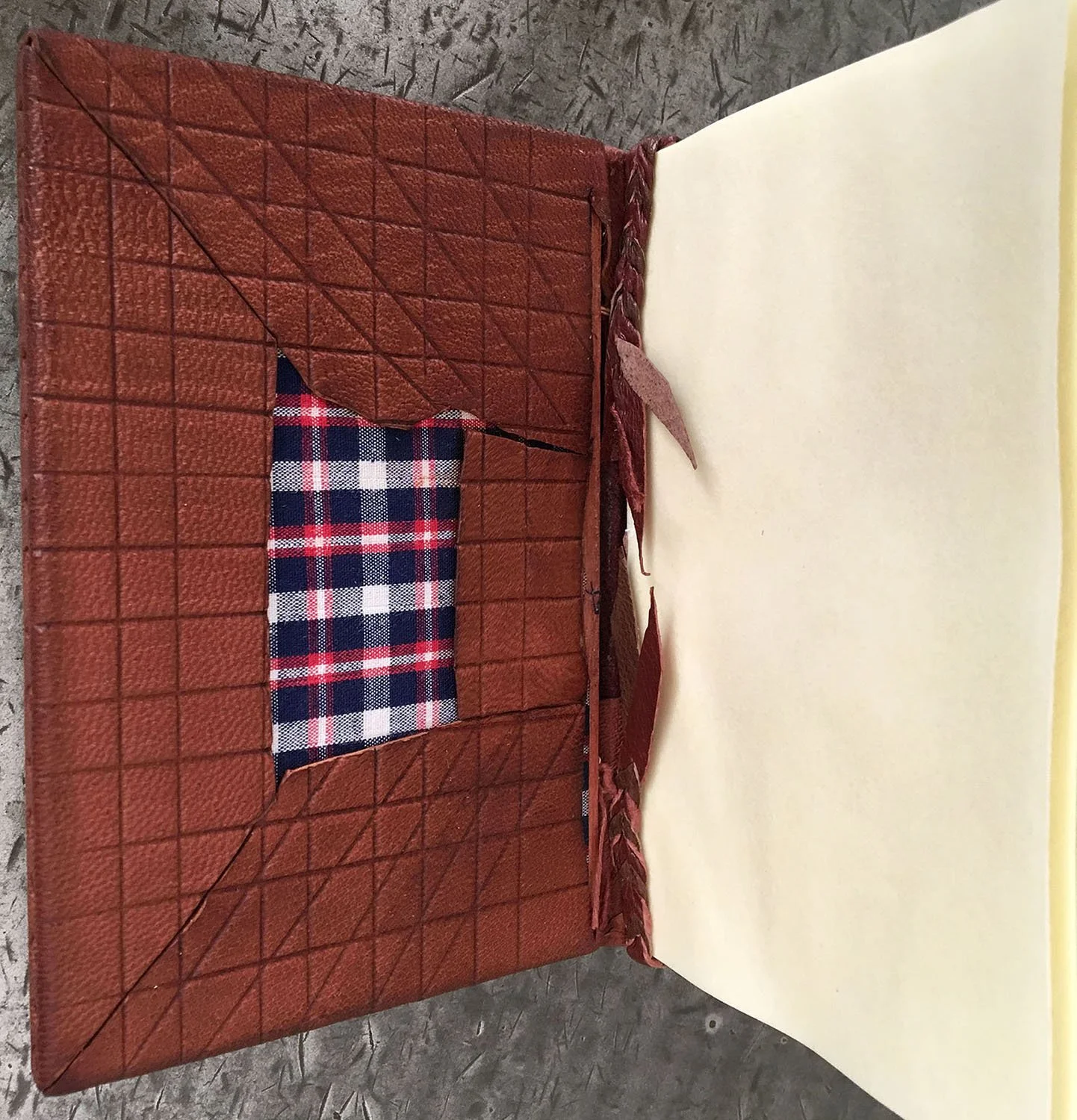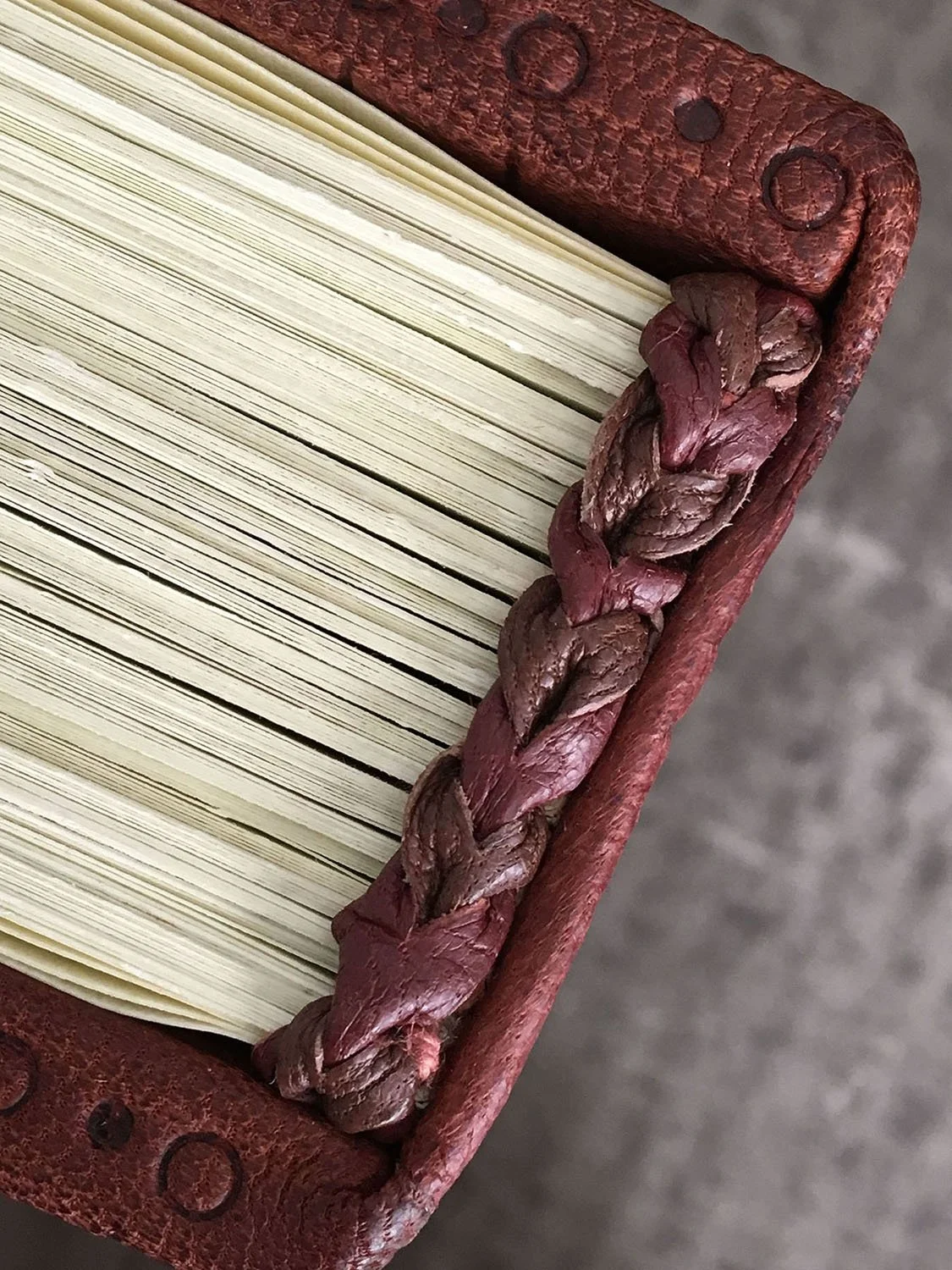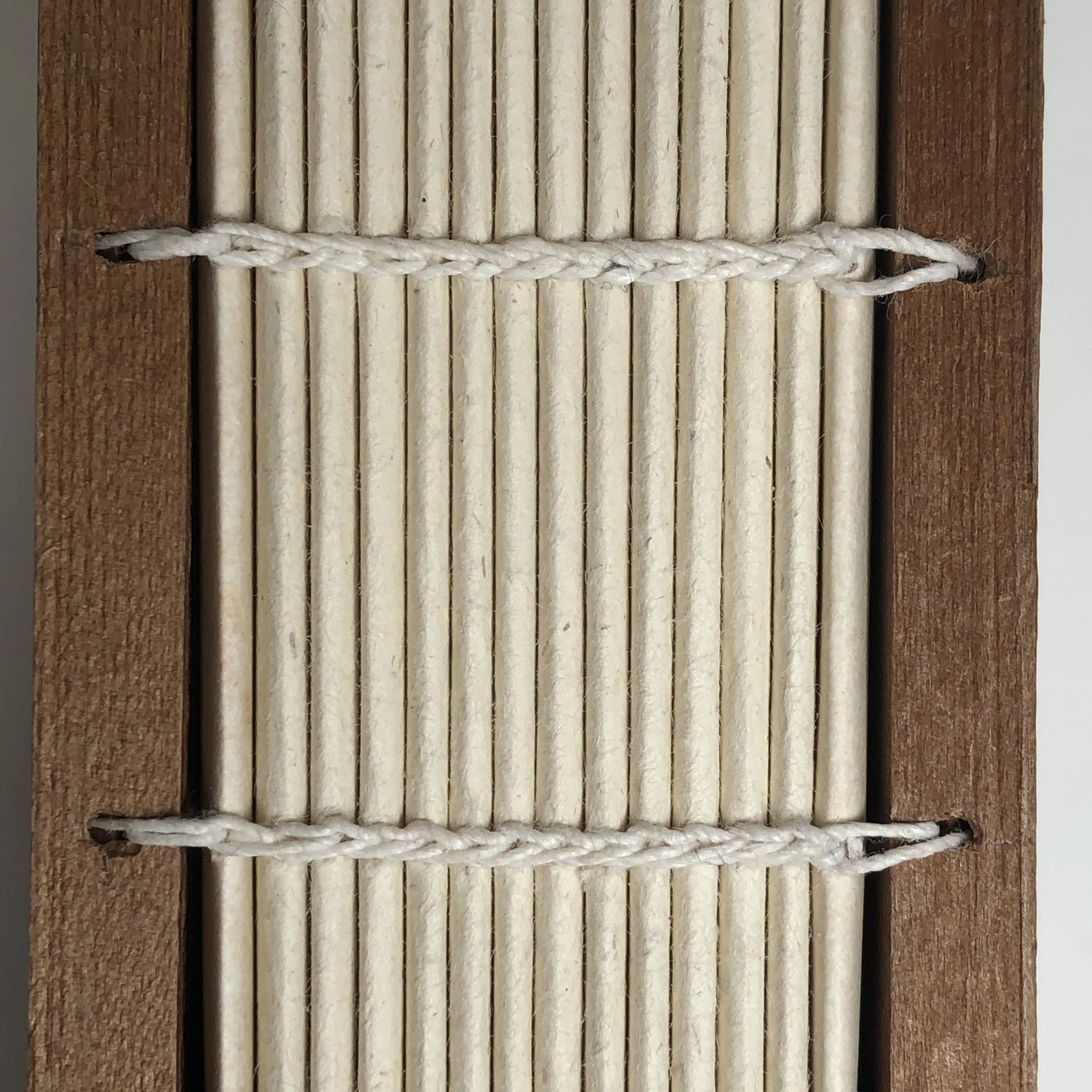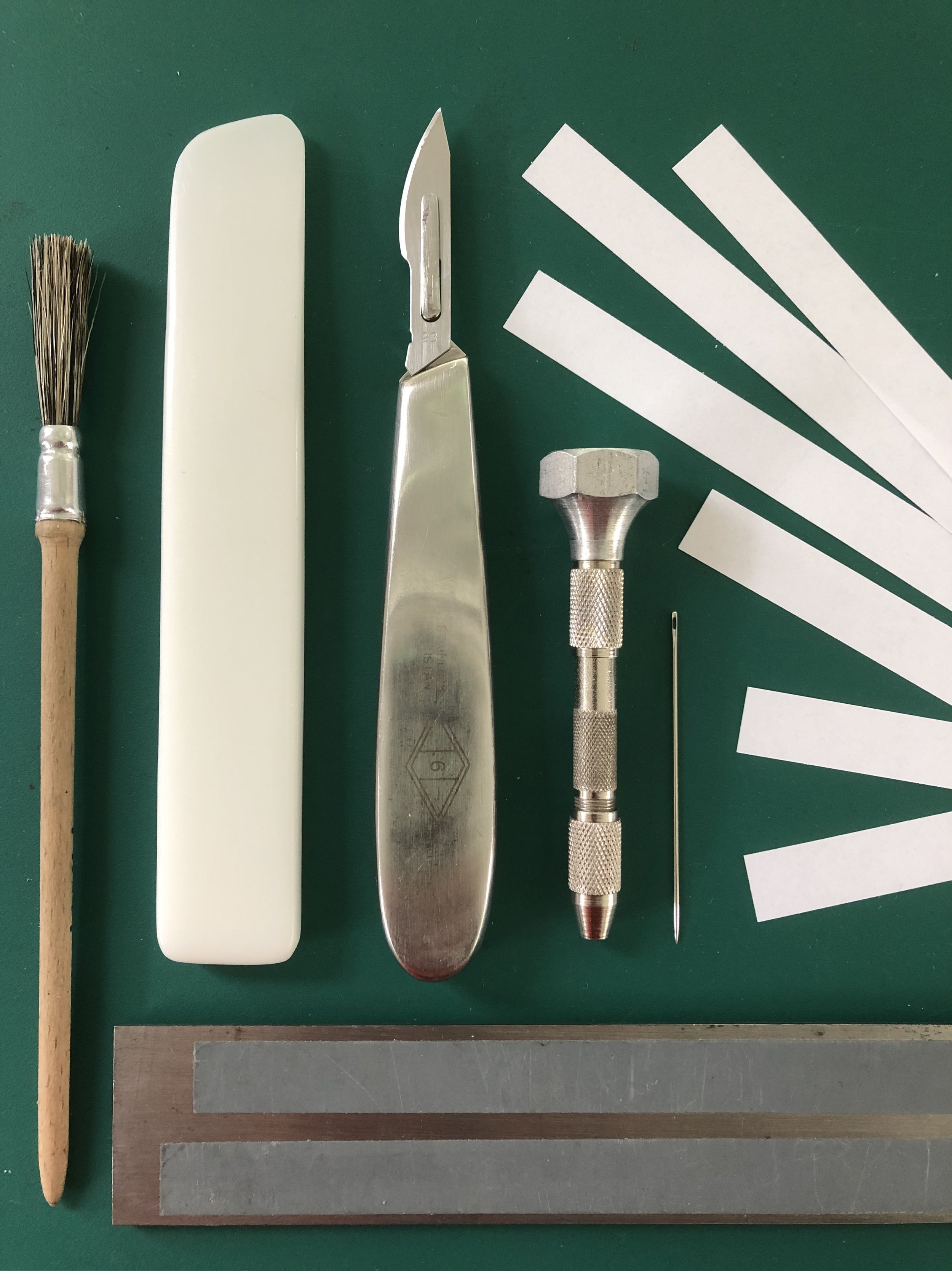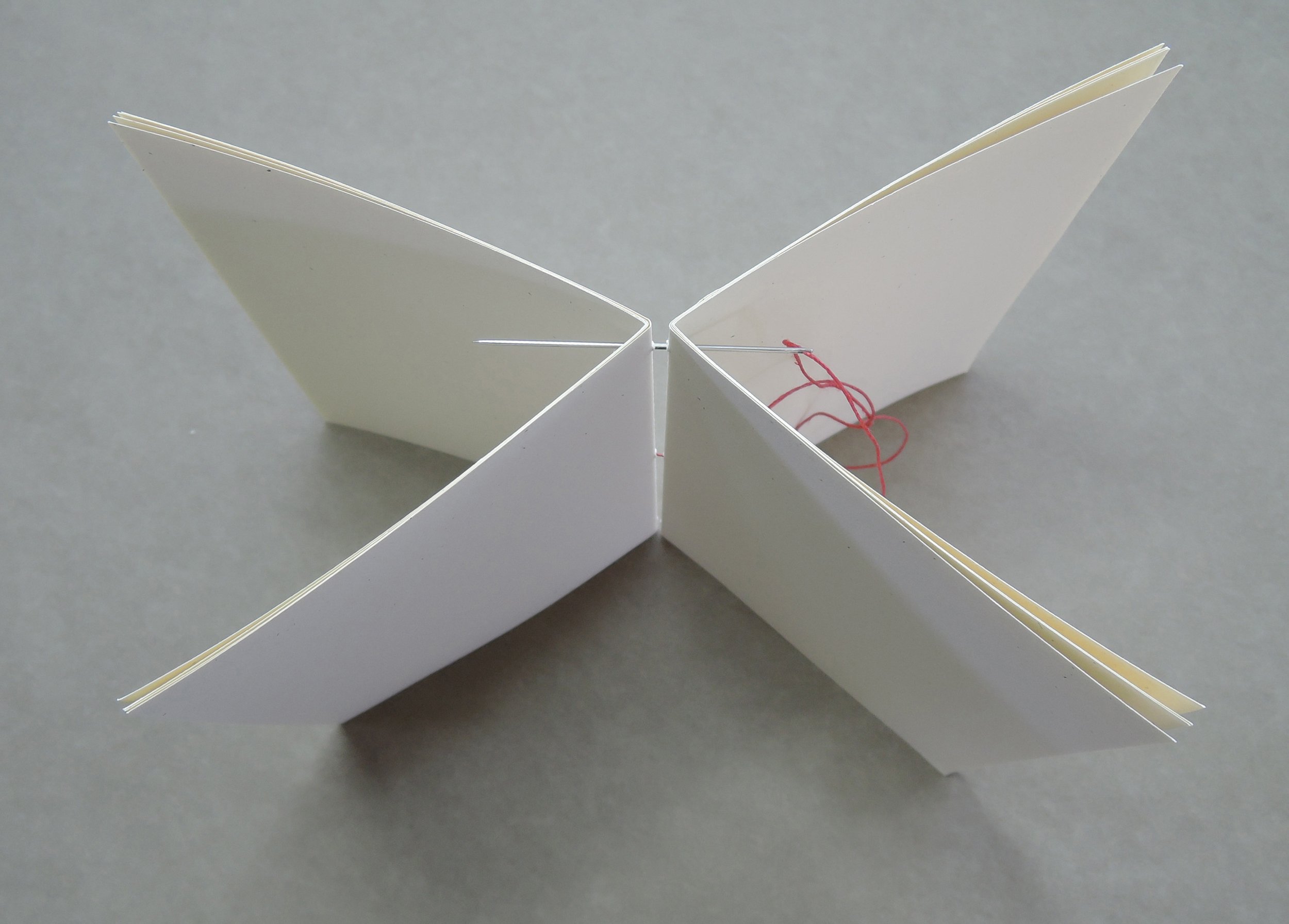 Image 1 of 10
Image 1 of 10

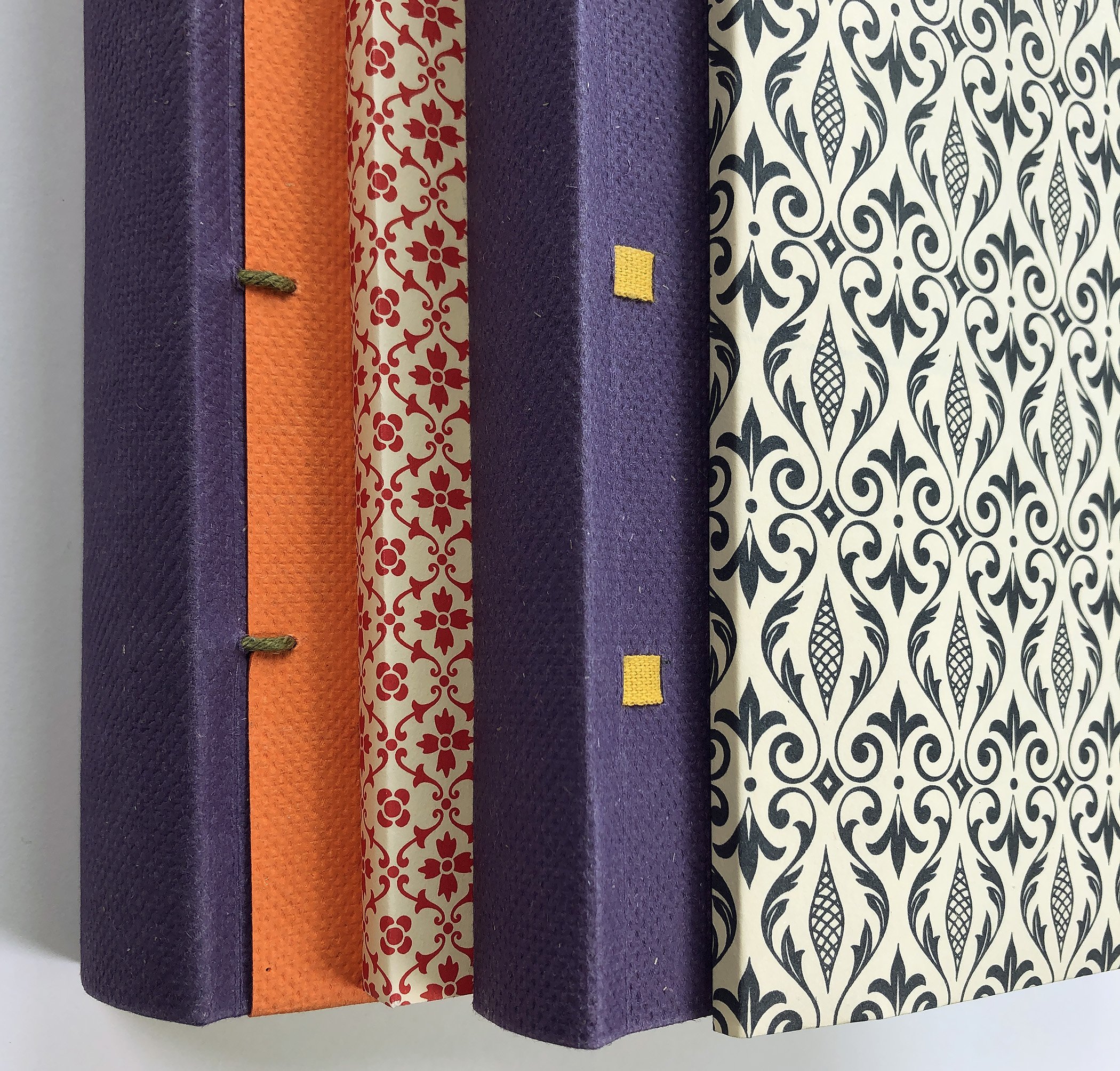 Image 2 of 10
Image 2 of 10

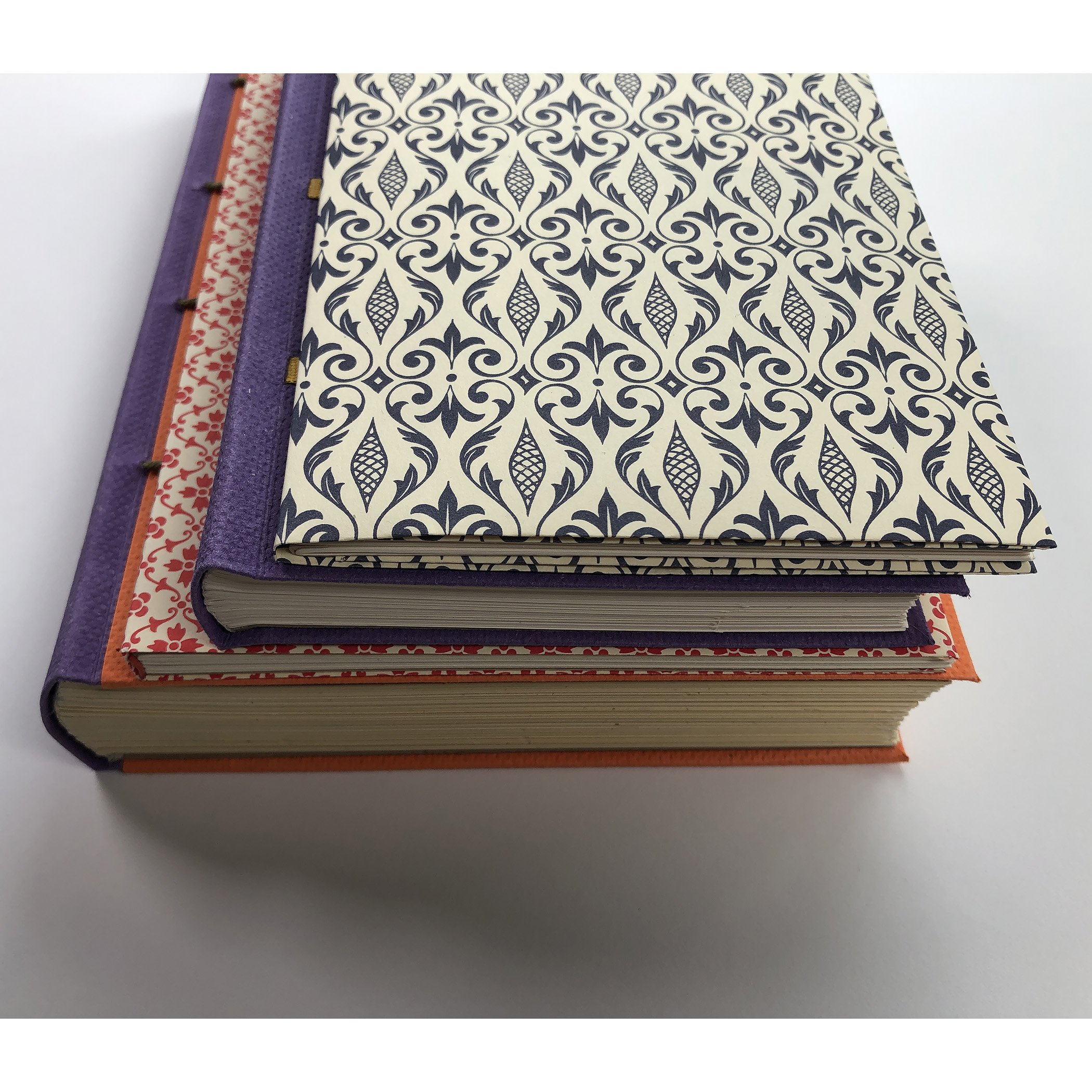 Image 3 of 10
Image 3 of 10

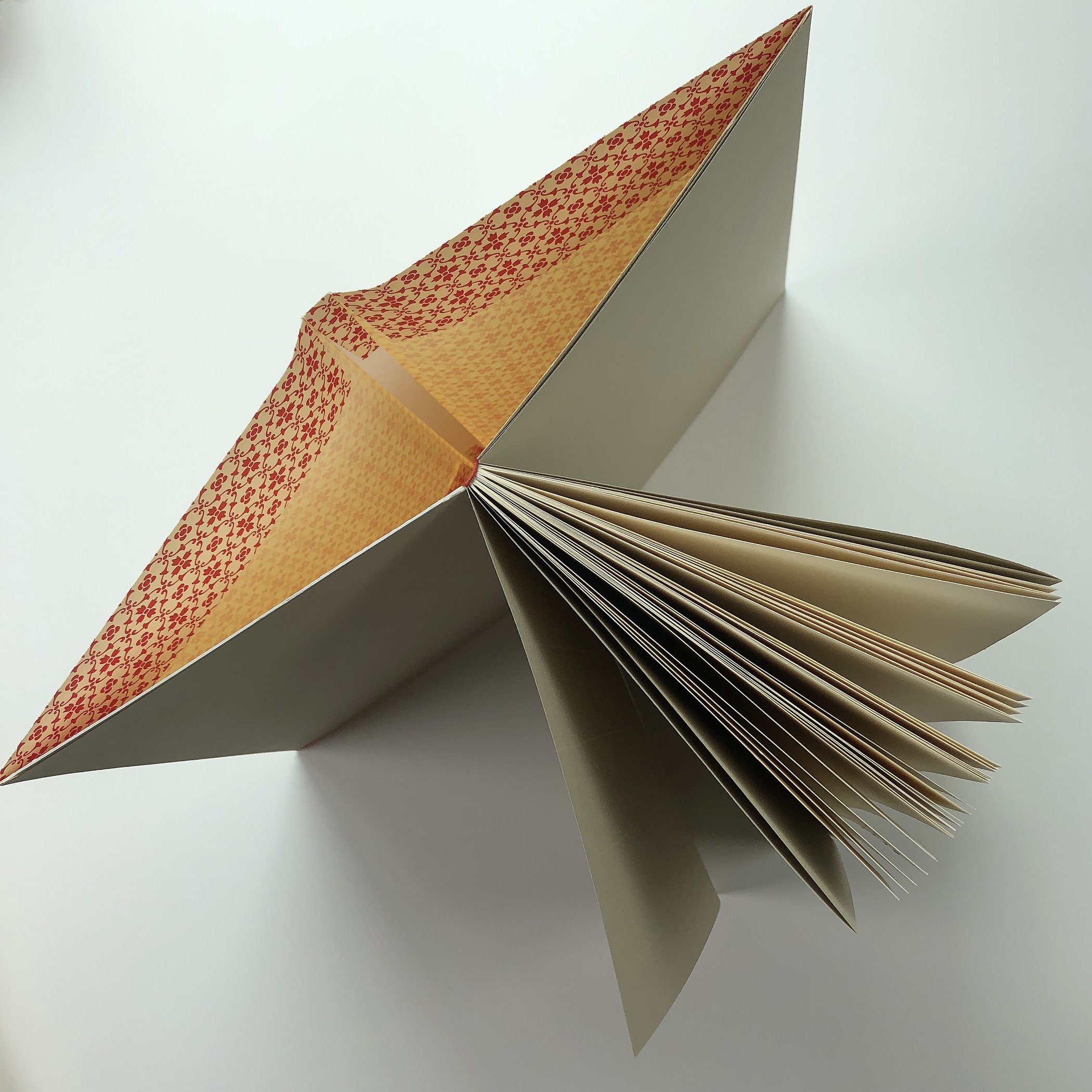 Image 4 of 10
Image 4 of 10

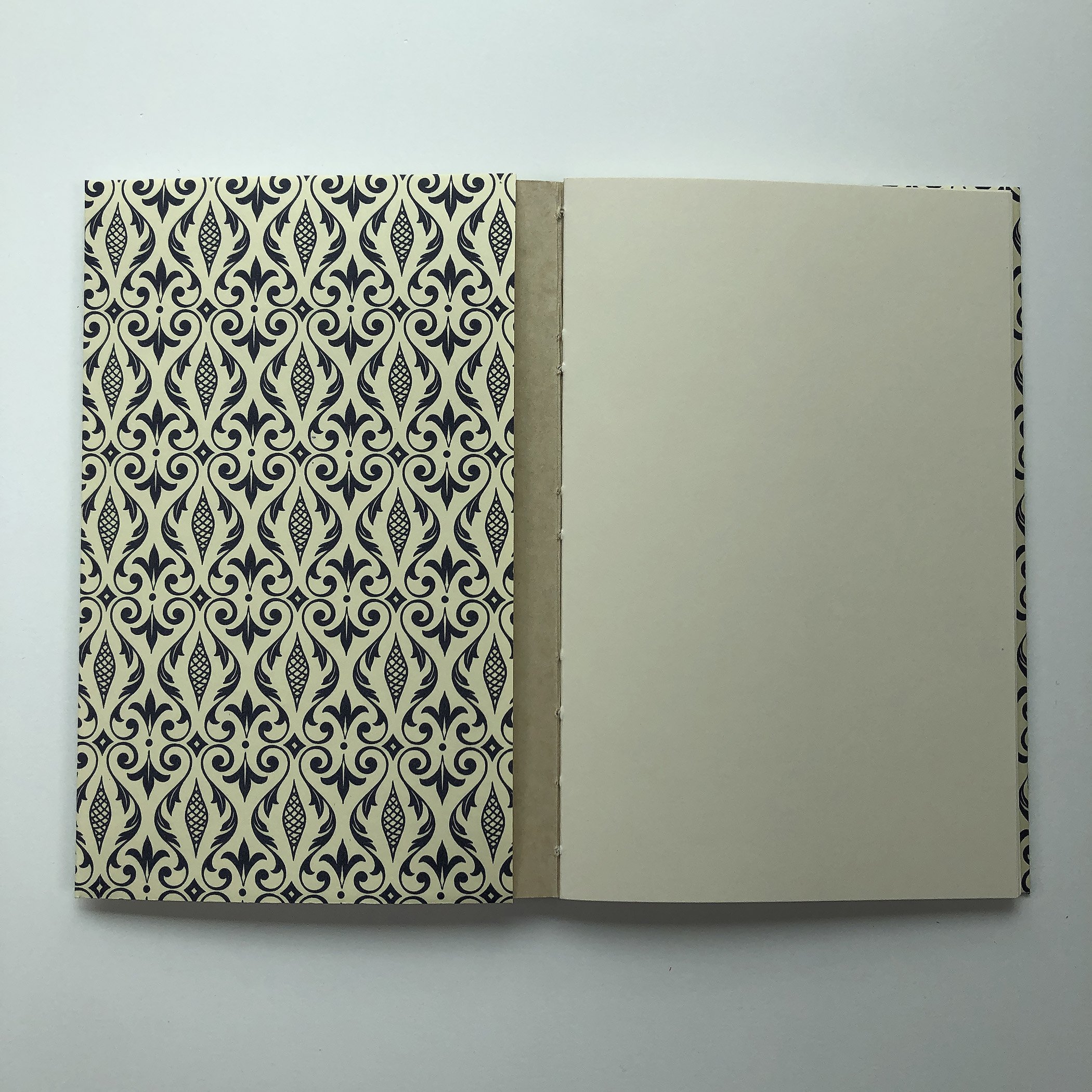 Image 5 of 10
Image 5 of 10

 Image 6 of 10
Image 6 of 10

 Image 7 of 10
Image 7 of 10

 Image 8 of 10
Image 8 of 10

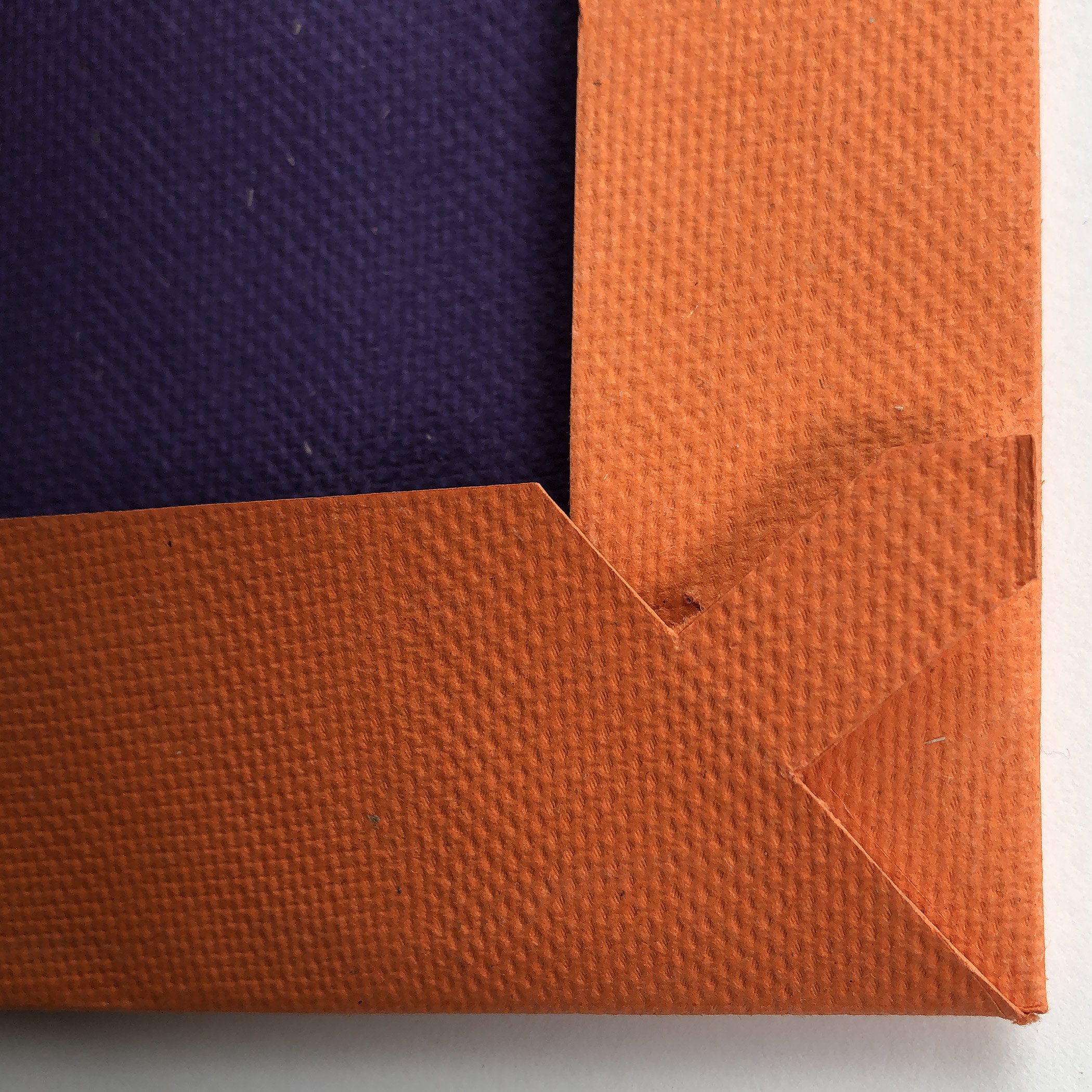 Image 9 of 10
Image 9 of 10

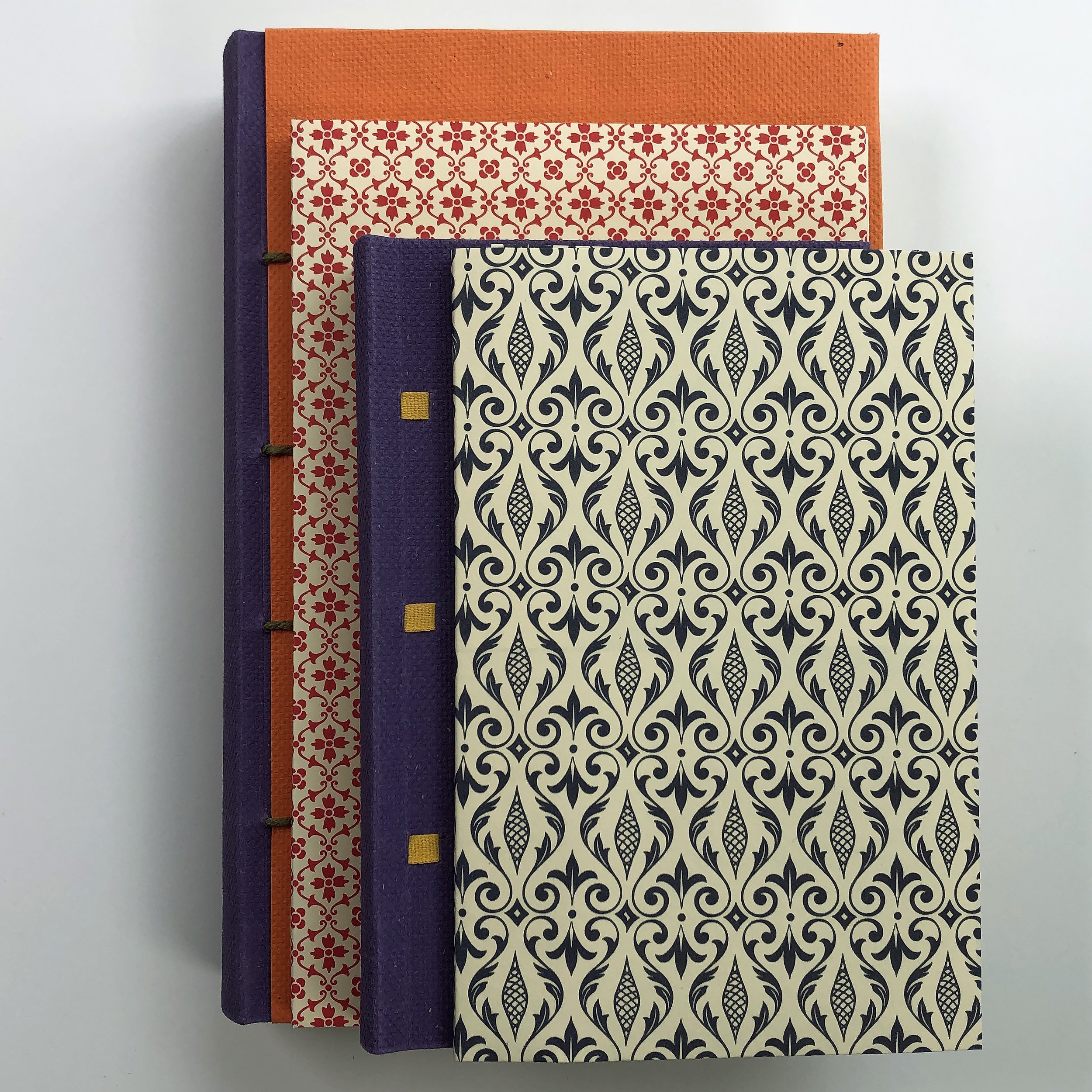 Image 10 of 10
Image 10 of 10











Paper Bindings: Small, Medium, Large online workshop.
This workshop is not currently scheduled, but it could be in the future. Please contact me if you are interested.
For centuries paper has served as a quick, elegant, and economical covering material for books. This versatile material can create structures ranging from pocket notebooks to conservation friendly bindings to cases durable enough for a heavily-used manual.
Students will make four binding models. Together these structures provide a set of options that can accommodate any text block from a few poems to a large reference work. All open enthusiastically and can be constructed in a modestly-equipped home studio.
Warmup: Paper Case with Tuck-In Endsheets. This case is based on Rules for Bookbinders, Boss Dog Press, 2003. Bound by Don Rash. The bookblock is attached to the case by inserting one or more of the first and last leaves into deep pockets at the case’s fore edges. The only cutouts in the folded case are to remove bulk from the fore edge folds.
Small: Breakaway Case with Tipped Stiffeners. This binding is based on Portraits of Katherine, Kat Ran Press, 2003. Binding by Claudia Cohen. This elegant case is a lightweight yet protective cover for a thin book. Card stiffeners are tipped between the fore edge turn-ins of the simple folded paper case. When the book is opened, the case breaks away from the spine.
Medium: Laced Compound Folded Cover. This binding is based on an illustration by Gary Frost. This case solves two problems in particular: it can be assembled quickly, and the multiple layers of the case provide strength without weight or bulk. The lacing at the base of the shoulder (not at the spine) encourages full opening.
Large: “Flexible Friends” Three-Piece Laced Case. This binding was introduced by Dutch binder Katinka Keus in her 2010 article in The New Bookbinder article titled “Flexible Friends.” The structure is based on early 18th-century Venetian bindings In this structure the bookblock is laced into the case not at the spine creases but instead at the joint creases to provide full and enthusiastic opening without damage to the case.
A sewing frame, finishing press, and nipping press are not essential but will ease the process.
Note: This is a fast-paced, advanced-level workshop for students experienced with traditional binding. To complete the material in the time scheduled, it is essential that students should be proficient in constructing reinforced endsheets, marking up, sewing on a variety of supports, rounding, backing, measuring for and applying spine linings. Students should be making sewn books independently, outside a workshop setting. Some homework may be required between sessions.
Please contact me if you are unsure if this workshop is the right fit for your current skills, or an appropriate stretch if you're ready for your next challenge.
The online format is a series of live tutorials via Zoom. The tutorials are recorded and the videos are available to registered students for 90 days. Students need not be present for the live sessions. Workshop fee includes supplies and a detailed handout, which are mailed to arrive in time for the first session. Zoom links will be sent the week before class, and a tool list no later than three weeks in advance. Please check your spam filter if you have not received these messages in this timeframe.
Students outside US and Canada please contact me to discuss options for supplies.
Payment in full is due at time of registration. See FAQs for refund policy.
This workshop is not currently scheduled, but it could be in the future. Please contact me if you are interested.
For centuries paper has served as a quick, elegant, and economical covering material for books. This versatile material can create structures ranging from pocket notebooks to conservation friendly bindings to cases durable enough for a heavily-used manual.
Students will make four binding models. Together these structures provide a set of options that can accommodate any text block from a few poems to a large reference work. All open enthusiastically and can be constructed in a modestly-equipped home studio.
Warmup: Paper Case with Tuck-In Endsheets. This case is based on Rules for Bookbinders, Boss Dog Press, 2003. Bound by Don Rash. The bookblock is attached to the case by inserting one or more of the first and last leaves into deep pockets at the case’s fore edges. The only cutouts in the folded case are to remove bulk from the fore edge folds.
Small: Breakaway Case with Tipped Stiffeners. This binding is based on Portraits of Katherine, Kat Ran Press, 2003. Binding by Claudia Cohen. This elegant case is a lightweight yet protective cover for a thin book. Card stiffeners are tipped between the fore edge turn-ins of the simple folded paper case. When the book is opened, the case breaks away from the spine.
Medium: Laced Compound Folded Cover. This binding is based on an illustration by Gary Frost. This case solves two problems in particular: it can be assembled quickly, and the multiple layers of the case provide strength without weight or bulk. The lacing at the base of the shoulder (not at the spine) encourages full opening.
Large: “Flexible Friends” Three-Piece Laced Case. This binding was introduced by Dutch binder Katinka Keus in her 2010 article in The New Bookbinder article titled “Flexible Friends.” The structure is based on early 18th-century Venetian bindings In this structure the bookblock is laced into the case not at the spine creases but instead at the joint creases to provide full and enthusiastic opening without damage to the case.
A sewing frame, finishing press, and nipping press are not essential but will ease the process.
Note: This is a fast-paced, advanced-level workshop for students experienced with traditional binding. To complete the material in the time scheduled, it is essential that students should be proficient in constructing reinforced endsheets, marking up, sewing on a variety of supports, rounding, backing, measuring for and applying spine linings. Students should be making sewn books independently, outside a workshop setting. Some homework may be required between sessions.
Please contact me if you are unsure if this workshop is the right fit for your current skills, or an appropriate stretch if you're ready for your next challenge.
The online format is a series of live tutorials via Zoom. The tutorials are recorded and the videos are available to registered students for 90 days. Students need not be present for the live sessions. Workshop fee includes supplies and a detailed handout, which are mailed to arrive in time for the first session. Zoom links will be sent the week before class, and a tool list no later than three weeks in advance. Please check your spam filter if you have not received these messages in this timeframe.
Students outside US and Canada please contact me to discuss options for supplies.
Payment in full is due at time of registration. See FAQs for refund policy.





